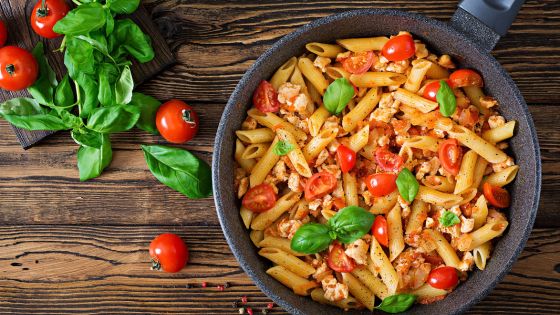Italian pasta, a cornerstone of Italian cuisine, is celebrated worldwide for its versatility, taste, and rich history. This article delves into the fascinating world of Italian pasta varieties, exploring their origins, characteristics, and culinary uses.
Origins and Evolution
Pasta, a staple in Italian cuisine, has ancient roots. While its exact origin is debated, it’s widely accepted that pasta has been a part of Italian culture for centuries. Initially a simple mixture of flour and water, pasta evolved with Italy’s diverse regional cultures, leading to the creation of numerous varieties.
Major Types of Italian Pasta
- Spaghetti: Perhaps the most famous type, spaghetti are long, thin strands, best known for classic dishes like Spaghetti Bolognese and Carbonara.
- Fettuccine: These are flat, thick noodles made of egg and flour, often served with hearty sauces like Alfredo.
- Penne: Known for their tube shape, penne are cut at angles and are perfect for holding sauces.
- Ravioli: Small pockets of pasta filled with cheese, meat, or vegetables, ravioli are a testament to the creativity of Italian cuisine.
- Lasagna: Wide, flat sheets used in the layered dish of the same name, lasagna is a comfort food loved globally.
- Orecchiette: Meaning “little ears,” these small, bowl-shaped pastas are typical in Southern Italy, often served with vegetable-based sauces.
Regional Specialties
Each region of Italy boasts its unique pasta varieties, shaped by local ingredients and traditions. For instance:
- Liguria is known for Trofie, often served with Pesto sauce.
- Tuscany celebrates Pici, a hand-rolled pasta similar to spaghetti but thicker.
- Sardinia offers Culurgiones, a unique stuffed pasta resembling large ravioli.
Artisanal vs. Industrial Pasta
Italian pasta can be divided into two main categories: artisanal and industrial. Artisanal pasta is often handmade using traditional methods and local ingredients. In contrast, industrial pasta is mass-produced, offering consistency and accessibility.
Cooking and Pairing
The key to perfect pasta lies in its cooking – “al dente,” meaning firm to the bite, is the ideal texture. Pairing pasta with the right sauce is crucial. Heavier sauces like ragù pair well with thicker pastas like tagliatelle, while lighter, oil-based sauces complement thinner pastas like spaghetti.
Health and Nutrition
Traditionally made from durum wheat, pasta is a good source of carbohydrates. Whole wheat varieties offer additional fiber and nutrients. Balanced with vegetables and lean proteins, pasta can be part of a healthy diet.
Italian pasta is not just a food item; it’s a cultural symbol that reflects Italy’s regional diversity and culinary artistry. From the simplest spaghetti to intricate stuffed pastas, each variety tells a story of tradition, innovation, and passion, making Italian pasta a beloved cuisine worldwide.

